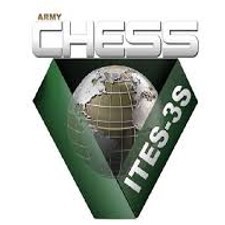The focus of today’s post is the quantum dynamics of the current state of a business process.
Yes, I agree, that is a very heady, perhaps even pretentious and provocative, title for a post regarding analyzing the current state of business processes.
A bit of backstory and then I believe that you will find the business analysis concept postulated in this post to be very valuable in analyzing business processes.
The Backstory
I recently had a discussion with a colleague that also has a background in Operations Research. Operations Research is the application of quantitative methods to the design and managment of business and industrial processes. The discussion inspired this post.
Part of the discussion included Markovian dynamics (a component of quantum systems). Markovian dynamics, in very simple terms (and I am taking a very wide literary license here) defines a limit or approximation for which the history of a system or process has on the future state of a system or process.
The Drunkard’s Walk
A simple example which is often used in connection with describing Markovian dynamics and Markov chains is the "drunkard's walk.” The basic concept is that an intoxicated person exits a bar and stumbles down the street.
Based on observation and measurement of the stumbles since exiting the bar there is an equal probably regarding the direction (degree of left or right of center) of each stumble.
Accordingly, the history of the stumbles at any point in the drunkard’s walk does not have a bearing on the direction of the next stumble. So, in this example, the limit is 0.
In other words, the history of the prior step/stumble or the chain of prior steps/stumbles has no bearing on the outcome of the next step/stumble.
Designing the Future State
In my experience approximately 95% of what “we” are currently doing in a business process (i.e., the current state) “we” will continue to do in the future state, albeit in a much better way – more streamlined, more automated, etc.
OK, if 95% of the current state moves forward into the future state, then from my perspective the current state of the process does indeed matter – a lot!
Now, taking Markovian dynamics into account, how much of the history of the current state (how did the current state come to be) matters?
In other words, do we care about the history of the current state, or do we simply care about the current state?
In my experience the history of the current state matters – a lot!
As business analysts we want to explore how/why did the current state come to be - what were the drivers (constraints, pressures, behaviors, strategic and operational objectives and priorities, regulatory guidelines and mandates, changes in technology, changes in organizational structure, etc.) that drove / governed / informed decisions to do certain things in certain ways?
For example, from a constraint perspective what were the technological constraints at the time decisions were made that dictated or influenced certain workflows and business policies? But now with newer technologies such as Artificial Intelligence (AI), Robotics Process Automation (RPA), what new things can we do in new ways or the same things in better ways?
The Limit of the Current State
How far back in history of the current state is relevant? Cleary, the answer is – it depends. As a high performing business analyst, it’s a judgment call that you need to make.
However, once you have a thorough current state process map (work activities, workflows, decision points, policies, supporting procedures, enabling technologies, roles, etc.) the veracity of which is validated by the SMEs and other stakeholders, you are in an authentic place to start asking the “why” questions.
The 5 Essential Business Analysis Questions whitepaper will provide deep insight into the why questions. Also take a look at my Business Process Modeling and my Business Process Reengineering courses for a deep dive.
Subscribe to my blog | Visit our Knowledge Hub
Visit my YouTube channel | Connect with me on LinkedIn
Check out our Business Analysis Training Courses and Consulting Services

 Login
Login




















